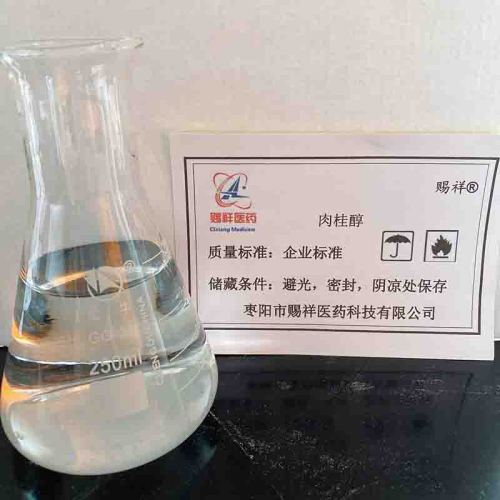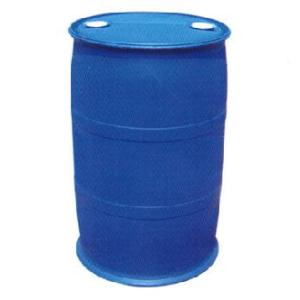Cinnamyl alcohol
Chemical name: β-phenylpropenol
Alternative names: cinnamyl alcohol, cinnamyl alcohol
CAS number: 104 -54 -1
Molecular formula: C9H10O
Molecular weight: 134.18
Main features: white to slightly yellow crystals, with pleasant scented gum smell similar to hyacinth. The melting point is 33°C. Boiling point 256.6℃, 42~145℃(187×103Pa), relative density (d420) 1.044, refraction 1.5819, freezing point ≥33℃; aldehyde content (calculated as cinnamaldehyde ≤1.5%).
Specification: 98%
Packing: 200KG/plastic drum
Quality standard: FCC IV
Use:
Medicine: important pharmaceutical raw materials. It is often used in the synthesis of cardiovascular and cerebrovascular medicines, such as cephalosporin. It can effectively inhibit lung tumors caused by viruses; it is clinically used for various tumors such as blood cancer, uterine cancer, ovarian cancer, and esophageal cancer.
Perfume: It is often shared with phenylacetaldehyde. It is an indispensable fragrance for the preparation of daffodil essence, rose essence and other floral fragrances. It can also be used as a fixative and modifier. Add to soap, perfume and chemicals.
Cinnamyl alcohol natural products exist in the form of esters in Peru balsam, cinnamon leaf, hyacinth oil and styrofoam. It is often used as fragrance fixing agent and modifier. It also shares with phenylacetaldehyde. It is an indispensable spice for the fragrance of fragrance, fragrance and fragrance. It can also be used to make apricot, peach, raspberry, plum and other flavor essence, cosmetic essence and soap essence. It has mild, lasting and comfortable aroma, and is elegant. It is also an important pharmaceutical raw material, commonly used in the synthesis of cardiovascular and cerebrovascular drugs, such as naoyizine. It can effectively inhibit the lung tumor caused by virus; It is widely used in blood cancer, uterine cancer, ovarian cancer, esophageal cancer and other tumors. Cinnamyl alcohol is a kind of edible spice which is temporarily permitted in gb2760-96. Mainly used for the preparation of strawberry, lemon, apricot, peach and other fruit flavor and prune.
IUPAC
(E)-3-phenylprop-2-en-1-ol
SMILES
C1=CC=C(C=C1)C=CCO











